In this guide to Kruger National Park in South Africa, we share our best tips and experiences for one of South Africa’s most exciting highlights. We spent a total of six days on the road – sometimes on guided tours, sometimes self-drive – and stayed both in the park and in accommodations outside.
Read more about our impressions and what we recommend for your own trip in this article. Any questions? Then feel free to write us in the comments! Have fun reading and discovering!
What else you should know
- Best time to travel to South Africa
- Currency of South Africa
- South Africa Entry & Visa
- Round trip with a rental car
- Garden Route South Africa
- Winelands South Africa
- Panorama Route South Africa
- Northern Cape Round Trip
- What else you should know
- General information about the Kruger National Park
- Animals in the Kruger National Park
- Best time to visit Kruger National Park
- Park opening hours
- Arriving by car & Airplane
- Gates in Kruger National Park
- Kruger National Park Entrance
- Wild Card South Africa
- Staying overnight in Kruger National Park
- Staying overnight outside the park
- Booking a guided safari vs. self-driving
- Our safari conclusion
- Duration of the tours
- Safari packing list and tips
- Malaria in Kruger Park
- Conclusion on Kruger National Park
General information about Kruger National Park
The Kruger National Park (the correct name is “Kruger Nationalpark”; the “ü” is due to the Germanization), whose foundation stone was laid by Paul Kruger in 1898, covers a total of almost 20,000 square kilometers. It is located in the northern provinces of Limpopo and Mpumalanga.
Even back then, Kruger’s vision was to protect wildlife from poachers. In doing so, he laid the foundation for today’s biodiversity. The park has been open to visitors since 1927. By 1935, more than 26,000 visitors had already come.
It stretches 350 km from north to south, and 60 to 80 kilometers from west to east – enough space for one of the greatest biodiversity in the world. The size of the park also creates a variety of landscapes. While the north is rather barren and rocky, the south is the most fertile and greenest part of the park thanks to the Sabie River. Kruger National Park is only about 430 kilometers from Johannesburg.
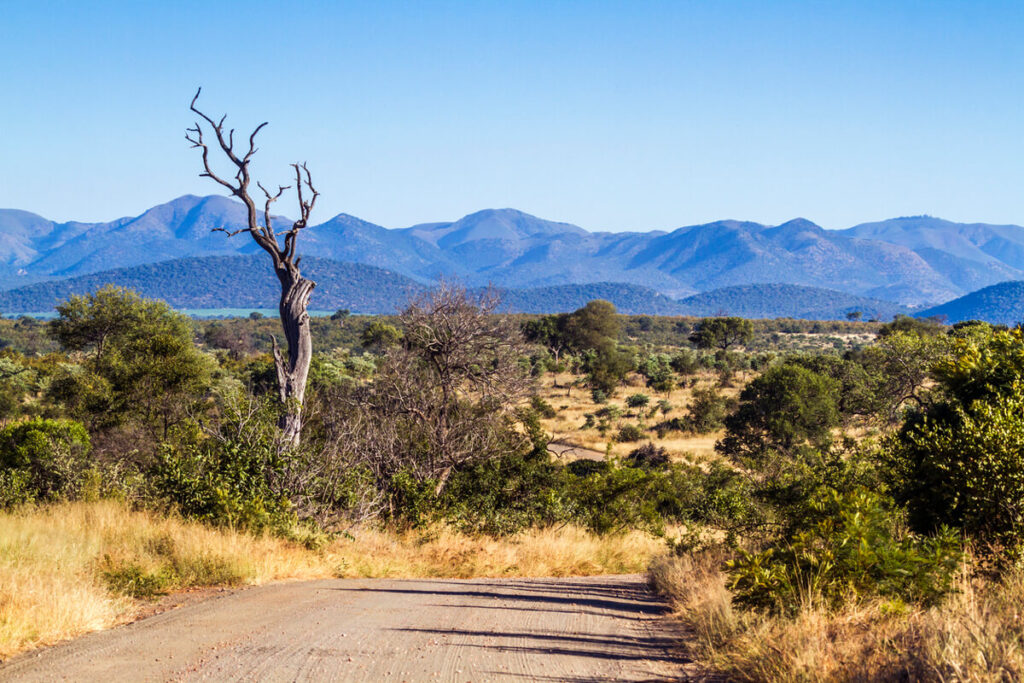
Animals in Kruger National Park
Of course, the famous Big Five, elephant, rhino, buffalo, leopard, and lion, live in the park. As fascinating as these animals are, it would be a real shame to only look out for them. Zebras, giraffes, hippos, crocodiles, wild dogs, warthogs, impalas, and antelopes are just as beautiful to look at as hyenas, baboons, or the many colorful birds.
For us, the highlight wasn’t any specific animals, but rather the coexistence of these animals in the “wild” in general. And did you know why they’re called the “Big Five”? That doesn’t mean they’re the largest animals in South Africa. In the past, the animals that were the most difficult to hunt and kill were referred to as the “Big 5.” And that includes rhinos, buffalo, elephants, leopards, and lions.

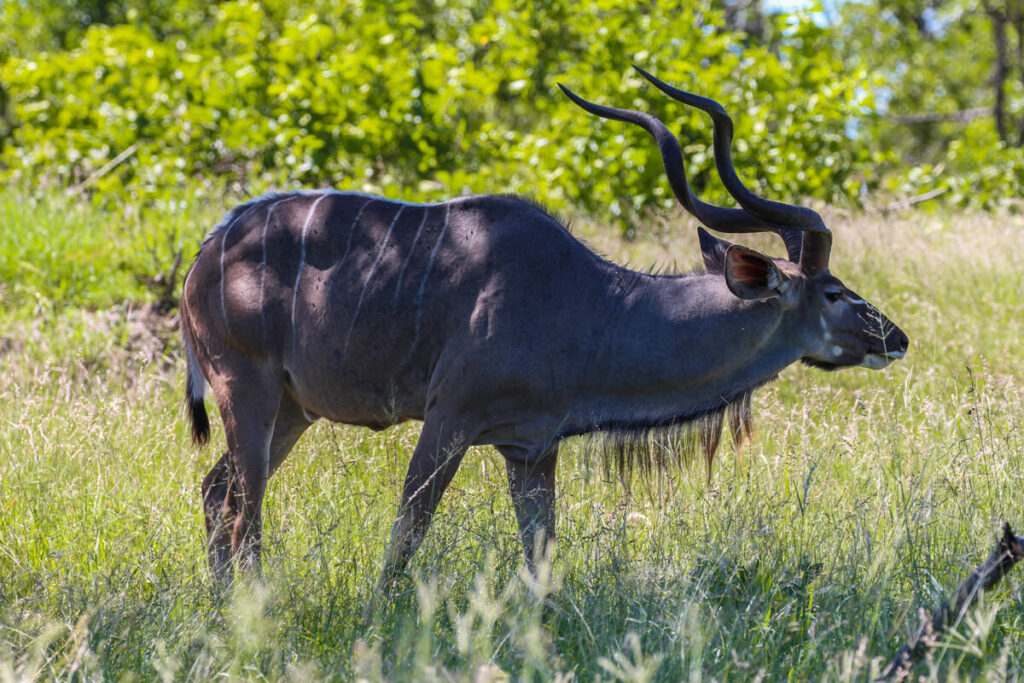
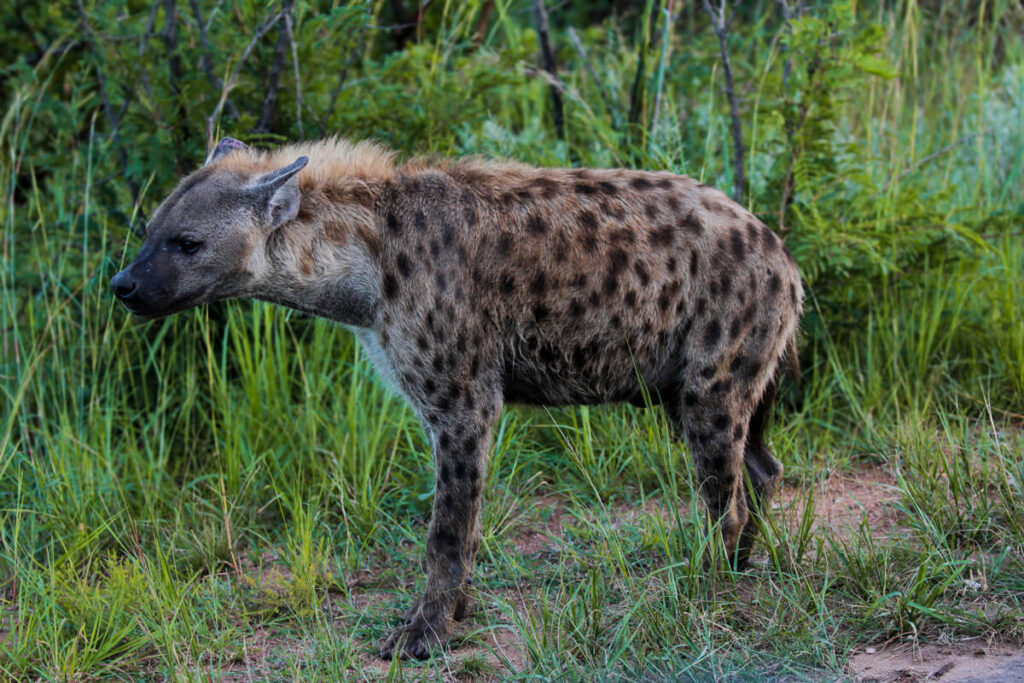
There are around 1,600 lions and 2,000 leopards in Kruger National Park. The African wild dog, however, is much rarer. According to the ranger, there are only 300 left in the park (…and we saw 5 of them!!!!). Spotting a cheetah is truly a matter of luck. There are only an estimated 150 of these animals left in the entire park.
It is also unclear how many rhinos are left in Kruger National Park. We were incredibly lucky to spot some. In addition to the 147 mammal species, there are around 54 recorded snake species in the park (including cobras and black mambas), as well as 492 bird species, 118 reptile species, 49 freshwater fish species, 34 amphibian species, 404 tree species, 224 grass species, and 1,275 other plant species. The diversity the park offers is simply amazing.
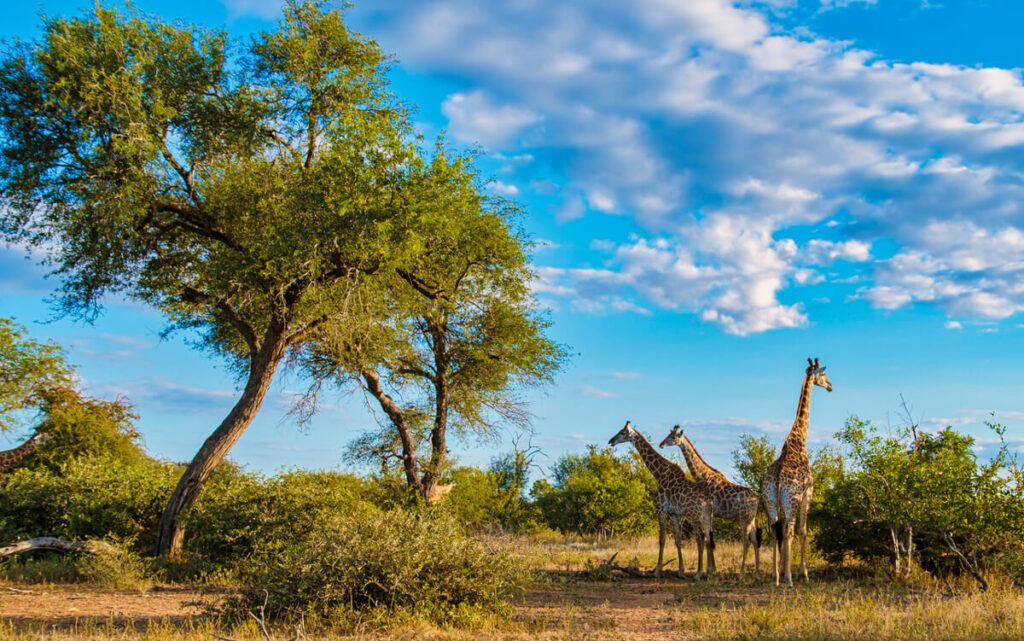
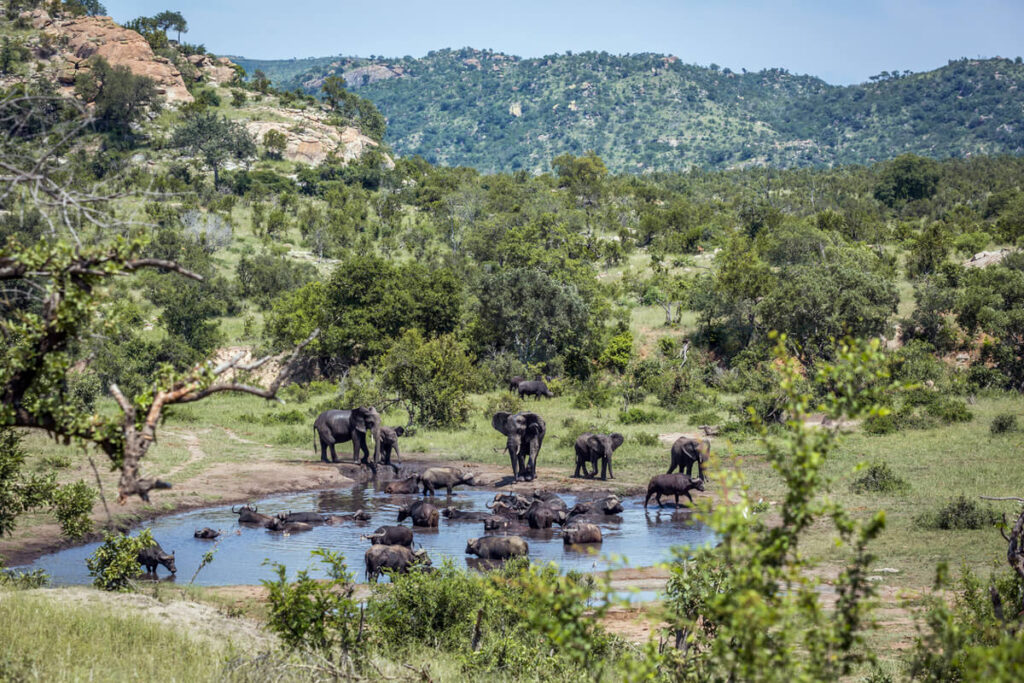
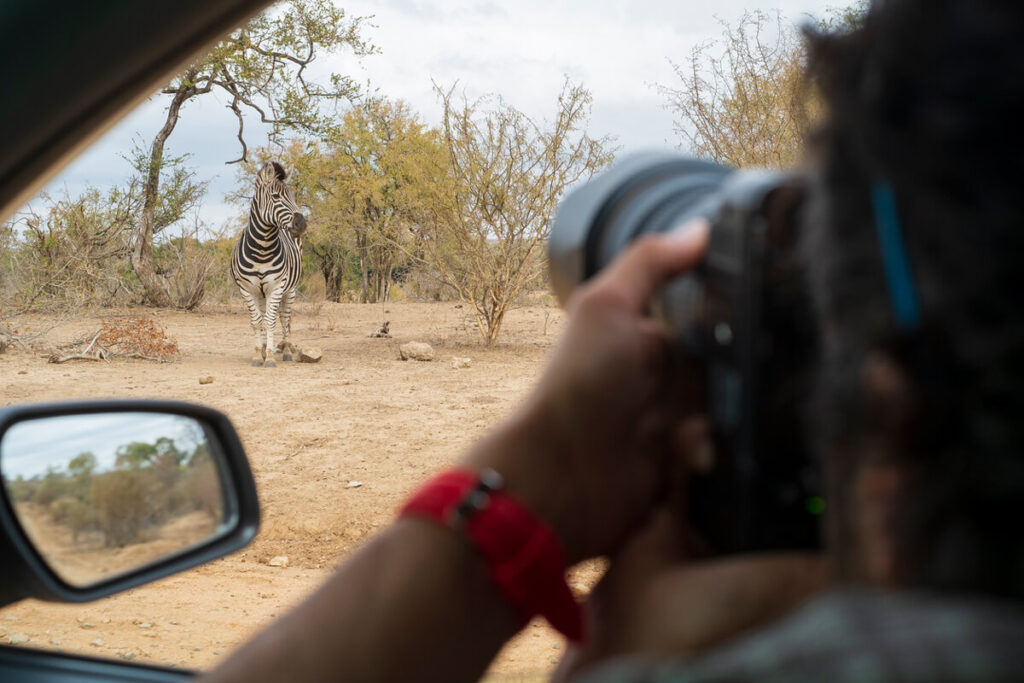
Best Time to Visit Kruger National Park
The best time to visit Kruger National Park is the dry season, which lasts from May to October. During these months, temperatures are more pleasant, vegetation is sparser, and there are fewer watering holes, making it easier to observe animals as they congregate at the remaining waterholes. This time is considered optimal for safaris and wildlife viewing.
The rainy season, from November to April, brings dense vegetation and numerous water sources, which can make seeing animals difficult. However, the park is particularly green during this time and offers impressive scenery. The rainy season is also ideal for birdwatchers, as many migratory birds visit the park. Newborn animals can also often be seen during this season.
The summer months, however, are very hot, with temperatures reaching 35°C and above. Many animals avoid the midday heat and hide in the shade. Therefore, you should definitely get up early, as the animals are more active in the early morning and late evening hours. You can find more information about the climate in South Africa here: Best time to travel in South Africa.

Park opening hours
The park has different opening hours depending on the month. The camps in the park open a little earlier in some months and a little later in others. So, if you stay overnight in a camp in the park, you can start earlier in the morning than those who have to drive through the gates from outside. These gates open an hour later in December, January, and February. In any case, start as early as possible. The animals are most active at this time of day.
- January: 5:30 a.m. to 6:30 p.m.
- February: 5:30 a.m. to 6:30 p.m.
- March: 5:30 a.m. to 6:00 p.m.
- April: 6:00 a.m. to 6:00 p.m.
- May: 6:00 a.m. to 5:00 p.m.
- June: 6:00 a.m. to 5:00 p.m.
- July: 6:00 a.m. to 5:00 p.m.
- August: 06:00 a.m. to 6:00 p.m.
- September: 06:00 a.m. to 6:00 p.m.
- October: 05:30 a.m. to 6:00 p.m.
- November: 5:30 a.m. to 6:30 p.m.
- December: 5:30 a.m. to 6:30 p.m.
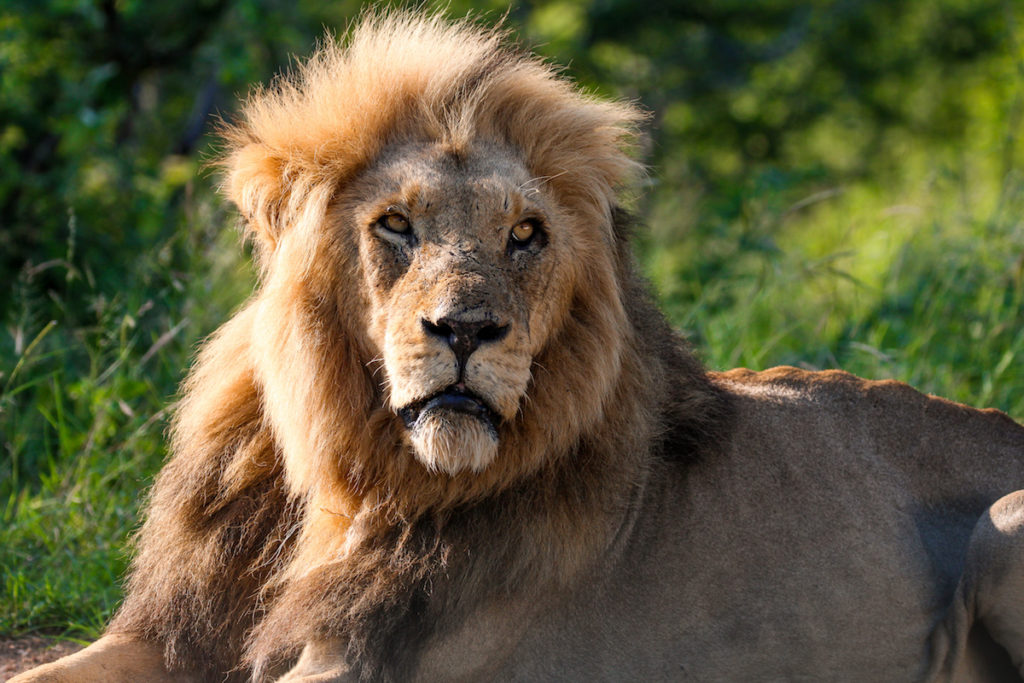
Arrival by car & Airplane
The Kruger National Park is relatively easy to reach, whether by plane or car.
Airplane: There are several airports in the area surrounding the park. The large OR Tambo International Airport in Johannesburg is around 430 km away and is well connected. Regional airports such as Kruger Mpumalanga International Airport in Nelspruit (Mbombela) or the airport in Hoedspruit are closer to the park and offer domestic flights as well as connections from Cape Town or Johannesburg.
Car: Most people choose to travel by car, as it offers the flexibility to explore the park and its surroundings. From Johannesburg, the journey takes about 4-5 hours. The journey is not complicated, as the road infrastructure is good and the routes are well signposted.
Gates in the Kruger National Park
There are a total of 9 entrances to the Kruger National Park (+ 2 gates via Mozambique). We prefer the southern entrance via the Crocodile Bridge Entrance Gate. Ultimately, it depends on your route.
If you’re exploring the Panorama Route beforehand, it’s a good idea to enter Kruger Park via the Orpen Gate. If you are coming from Johannesburg, the southern gates, such as Crocodile Bridge and Malelane, are particularly suitable.
The southern gates:
- Malelane Entrance Gate
- Crocodile Bridge Entrance Gate
- Numbi Entrance Gate
- Paul Kruger Entrance Gate
- Phabeni Gate
The central gates:
- Orpen Entrance Gate
- Phalaborwa Entrance Gate
The northern gates:
- Phalaborwa Entrance Gate
- Punda Maria Entrance Gate
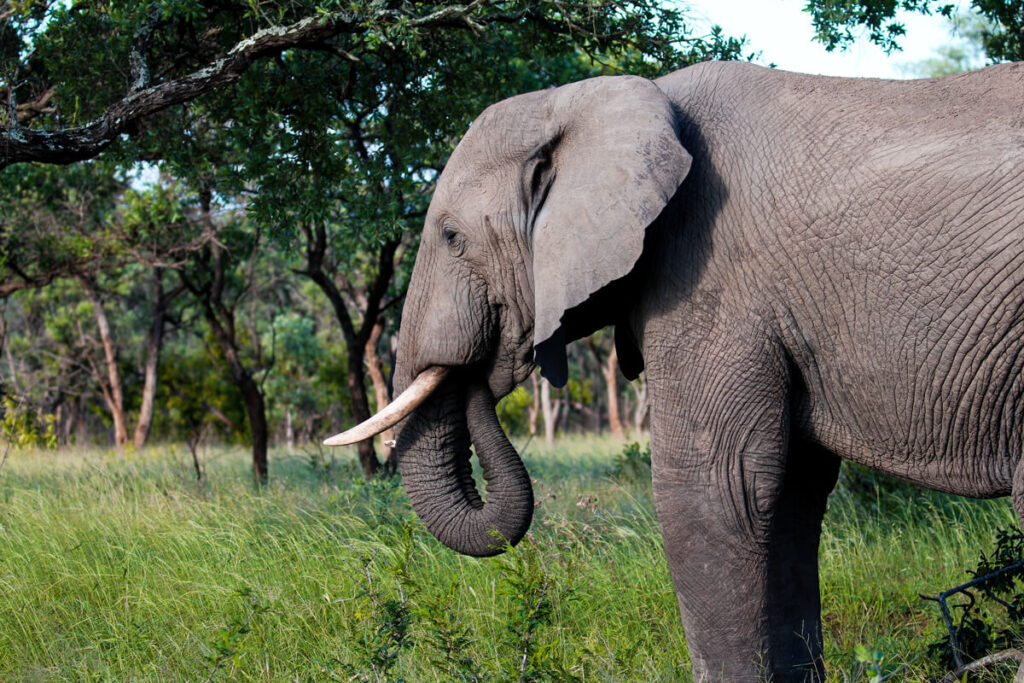
Kruger National Park Entrance Fee
The SANParks adjust the entrance fees (“Daily Conservation Fee”) every year. Currently, until October 31, 2025, admission costs 535 Rand per person per day (approximately €28). Children pay only half (ZAR 267). Of course, these rates can easily change throughout the year. It’s best to check the SANParks website in advance.
The fee of €28 is paid by every day visitor, regardless of whether they are staying overnight. If you stay one night in the park, you will still pay the fee for two days (arrival and departure days). You can pay the Conservation Fee directly when booking your accommodation (although this is rather unusual) or on-site at the respective gate (common).
Wild Card South Africa
If you are traveling in South Africa for an extended period of time, the Wild Card might be something for you. This national park pass can save you a lot of money. The Wild Card grants unlimited access to over 80 national parks and reserves in South Africa and Eswatini for one year. For international guests, the Wild Card costs 4,160 ZAR (~€218) for individuals, 6,495 ZAR (~€341) for couples, and 7,770 ZAR (~€408) for families.
Whether purchasing the Wild Card is worthwhile for you depends on the number and duration of your planned park visits. For longer stays or visits to multiple parks, the Wild Card can offer significant savings. However, we recommend comparing individual travel plans and current entrance fees for the desired parks in advance.

Accommodation in Kruger National Park
Kruger National Park offers various accommodation options for every budget and experience level, depending on whether you prefer to stay directly in the park or outside.
State Camps
The 27 state camps such as Skukuza, Lower Sabie, or Satara are a popular choice and offer you the opportunity to experience the wilderness up close. These camps are well-equipped and offer simple chalets, cabins, tent pitches, and bungalows. They also have amenities such as small shops, restaurants, and braai facilities.
We recommend booking these accommodations early! The cheaper government camps in the south (Skukuza, Lower Sabie) in particular are often fully booked months in advance. We recently stayed at the ⭐️ Skukuza Camp and stayed in a bungalow there. This cabin is available from €88 per night. The smaller cabins in Lower Sabie, for example, are cheaper. One night there starts at just €26.
Note: If you are staying overnight in the park, you must declare this at the park entrance. When you leave, you will need to present an exit permit from your accommodation. You can get this from the reception of your accommodation. You can pay the park entrance fees (Daily Conservation Fee) directly when booking on Sanparks.
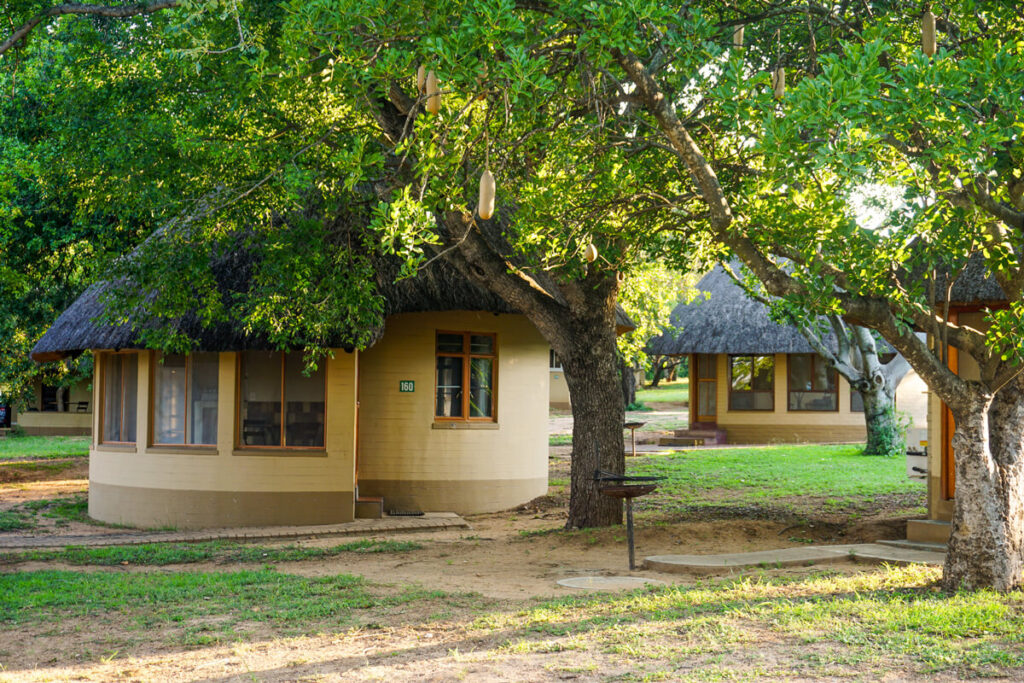
Private Lodges in Kruger National Park
In addition to the government-run camps, there are also more luxurious private lodges in the park that offer a more exclusive experience. These lodges often have their own private concessions and offer exclusive safaris on private trails, often with smaller groups and personalized attention.
They are usually more expensive, but offer a comprehensive all-inclusive package that includes transfers, meals, and guided tours. Lodges like Sabi Sabi or Singita are known for their luxurious amenities and personalized safari experiences.
Great lodges & private reserves in the park
- Kruger Shalati – Train on The Bridge & Garden Suites*
- Langa Langa Tented Safari Camp*
- Hamiltons Tented Camp*
- Pungwe Safari Camp*
- Kruger Safari Lodge*
- Makumu Private Game Lodge*
- Kambaku Safari Lodge*
- Senalala Luxury Safari Camp*
- Shindzela Tented Camp*
- Rhino Post Safari Lodge*
- Baobab Ridge*
- Nkorho Bush Lodge*
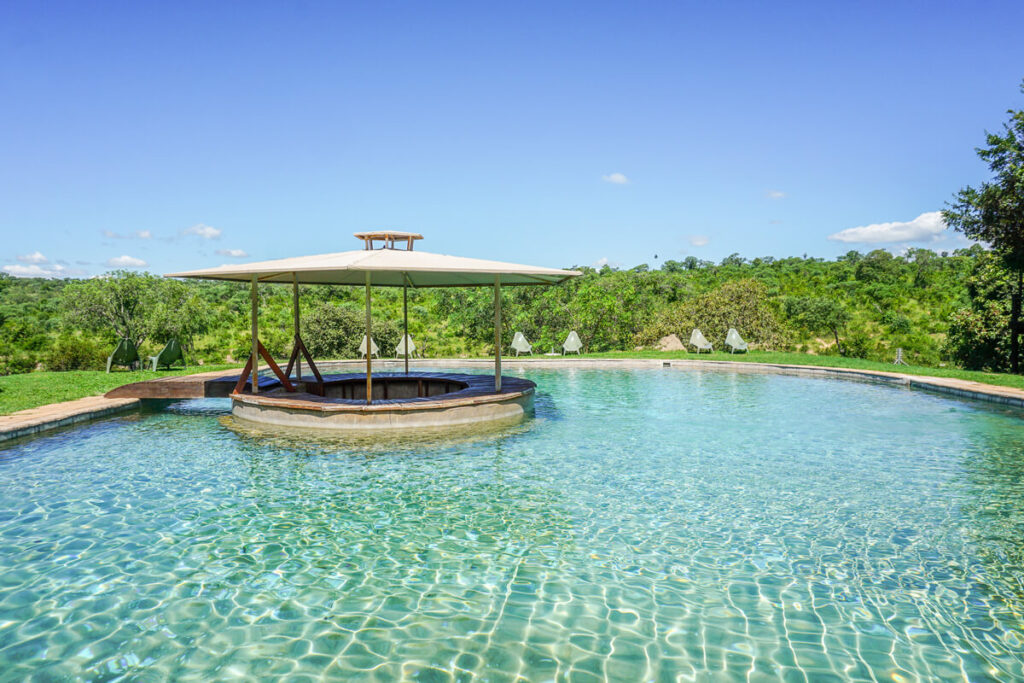
Accommodation outside the park
If everything is already fully booked or too expensive, you can also stay overnight outside the park. Many people stay in Hazyview or Marloth Park (south of the park). Other nearby towns include White River, Nelspruit, and Malelane. It’s often cheaper to stay overnight outside the park. However, you then have to either drive to the park yourself in the morning or book a tour.
Marloth Park
- La Kruger Lifestyle Lodge* ⭐️
- Kruger Eden Lodge*
- Dream of Africa Bush Lodge*
- Grace of Africa*
- Kudus Crest Bush Retreat*
- Crocodile Kruger Safari Lodge*
- Kruger Private Lodge*
Around Hazyview
- Nkambeni Safari Camp* ⭐️
- Mdluli Safari Lodge*
- Summerfields Rose Retreat & Spa*
- Chestnut Country Lodge*
- Bambuu Lakeside Lodge*
- Hippo Hollow Country Estate*
- Hamiltonparks Country Lodge* ⭐️
Malalane
- Goedehoop Boutique Manor House*
- Simbini Sunset Cottage*
- Belvedere-on-River*
- Kambaku River Lodge*
- Buhala Lodge*
- Serenity Mountain & Forest Lodge*
- Nkomazi Kruger Lodge & Spa*
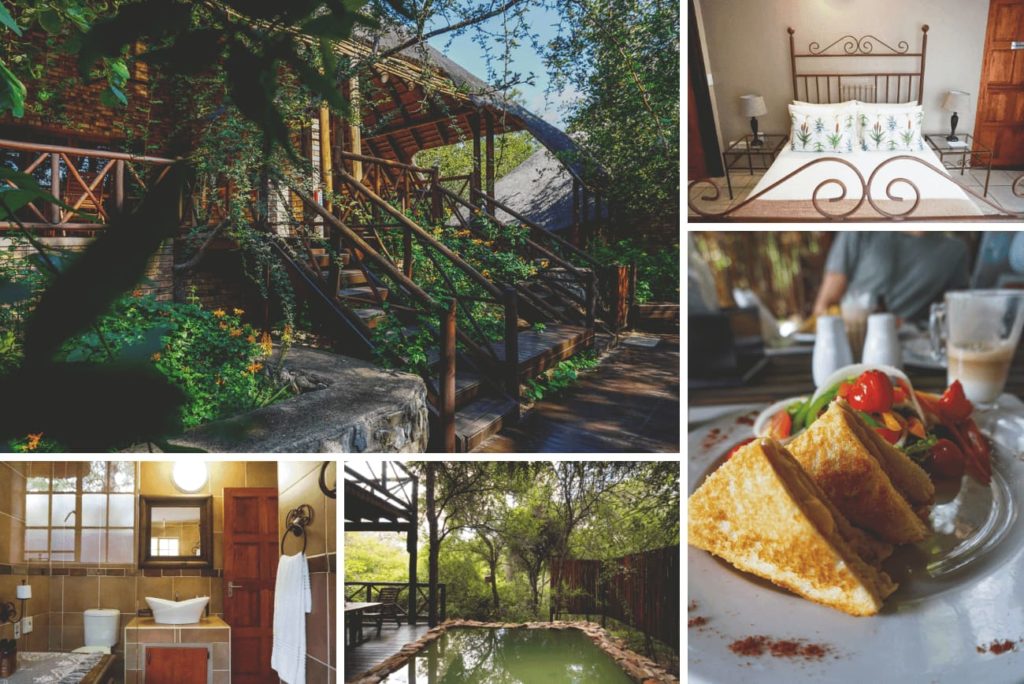
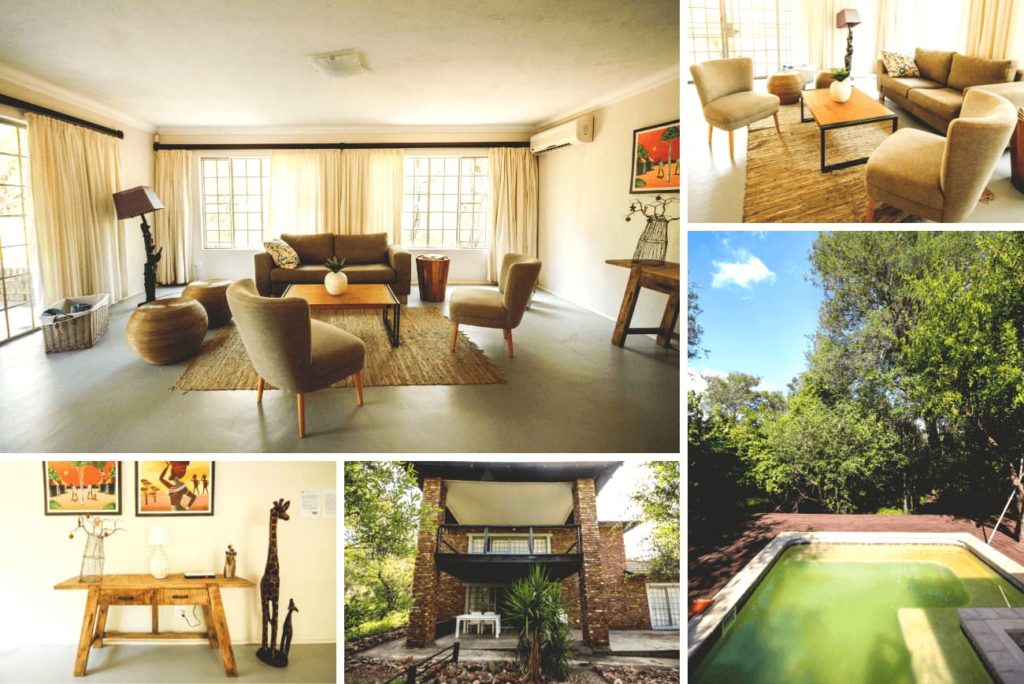
Booking a guided safari vs. self-drive
When deciding between a guided safari and self-drive, it all depends on your personal preferences and expectations of the safari experience. During our last South Africa trip, we were able to examine both options in detail. We drove through the park ourselves in our rental car for three days and participated in guided safaris in the park for three days. In the following section, we will introduce you to both options in more detail.
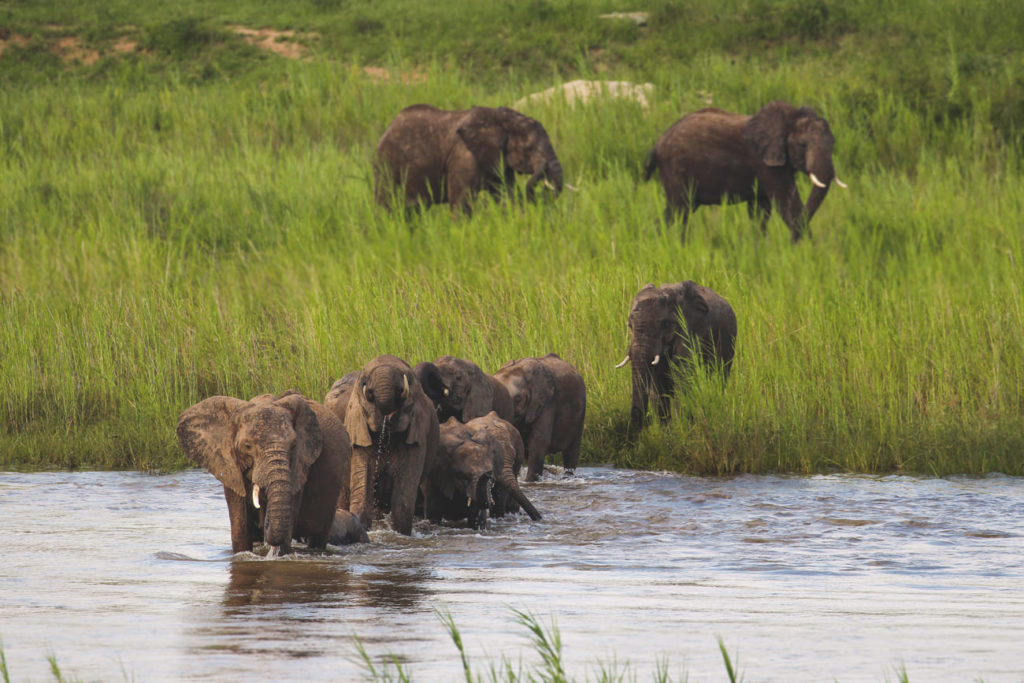
Book Guided Safaris/Tours
A safari in Kruger National Park in a jeep with a ranger is the most popular option. We did various tours over three days and were picked up directly from our accommodation in Hazyview. The ranger took care of the paperwork at the gate.
Guided safaris are exciting: You sit high in a typical safari jeep and learn many interesting facts about the park, the animals, and plants from the ranger. He knows exactly where and when to see animals. It’s also relaxing that none of us had to drive, giving us plenty of time for observation and photos.
The jeep seats 12-16 people, which requires compromises—especially if everyone wants a good photo. There are half-day and full-day tours, night safaris, bush walks, and sunset tours. Bookings can usually be made directly at the reception of the camps; However, not all tours are permitted for children under six years of age.
Most Popular Tours
- From Hazyview: Kruger National Park Full Day Safari*
- From Marloth Park: Kruger National Park Safari Game Drives*
- From Malelane: Kruger National Park Afternoon Safari*
- Hoedspruit: Bush Dinner & Safari Game Drive*
- 3-Day Kruger Glamping Budget Adventure*
- Kruger National Park: 3-Hour Walking Safari*
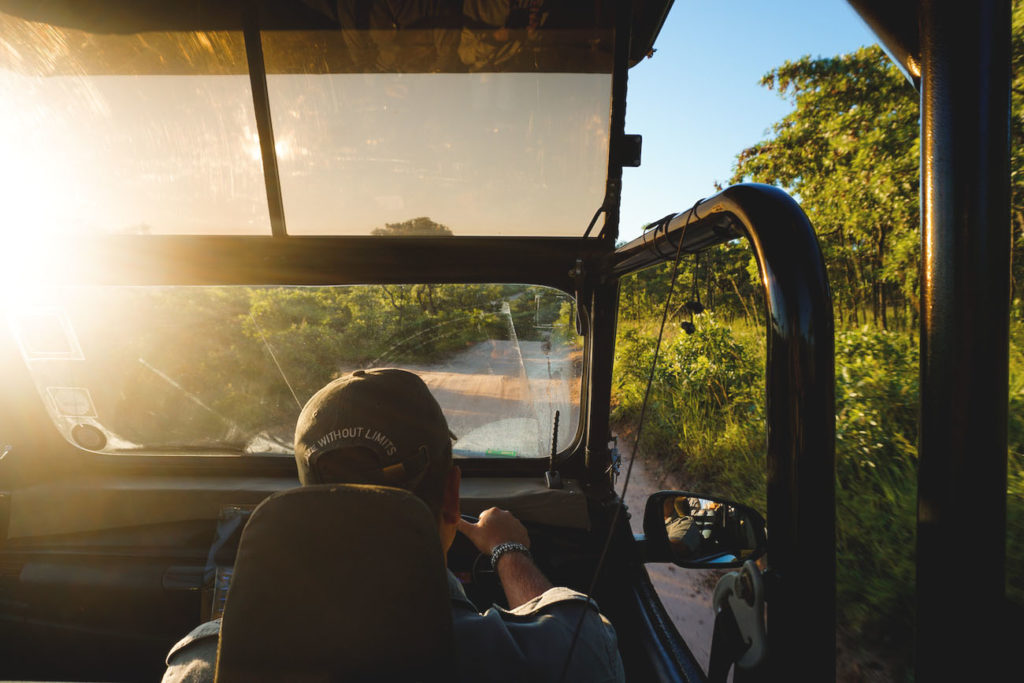
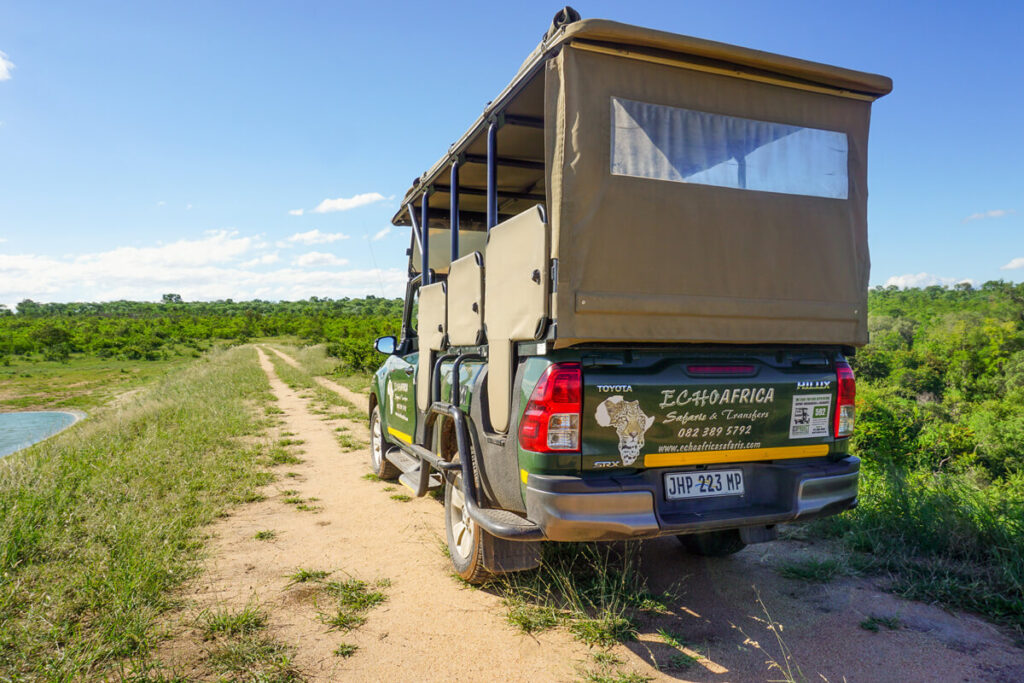
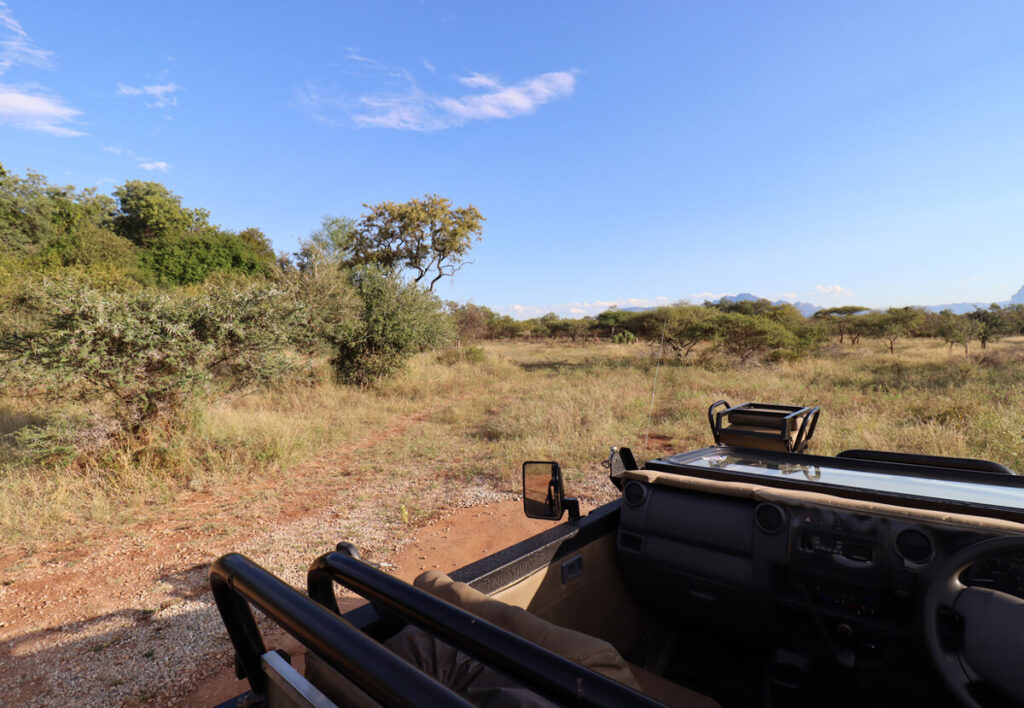
Self-drive in Kruger National Park
It’s incredibly fun to drive through Kruger National Park in South Africa in your own car. You can stop whenever you want, stay in one place as long as you like, are generally more flexible, and can plan your own route. This way, you can enjoy some moments all by yourself and with plenty of time. Turn off the engine, marvel, and just take it all in.
That’s something! This option is also cheaper than a guided safari. However, you have to keep in mind that you’ll have to concentrate on driving and won’t have as great a view as in the elevated jeeps. As a self-driver, you’ll have to take care of the formalities upon entry. This isn’t anything wild, but it can take a while, especially in the early morning (rush hour).
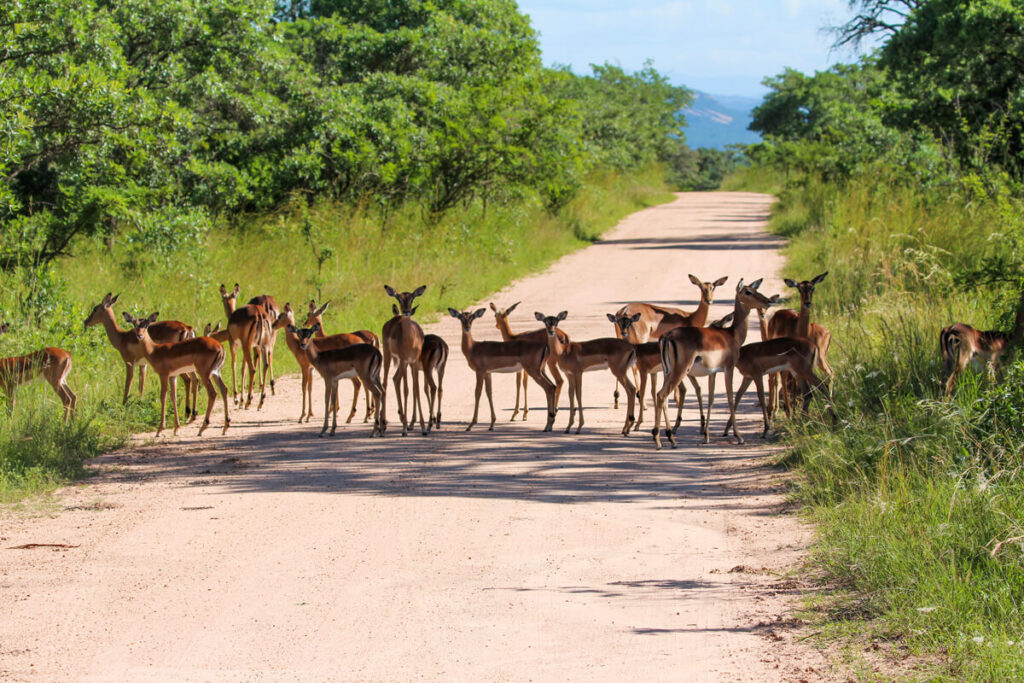
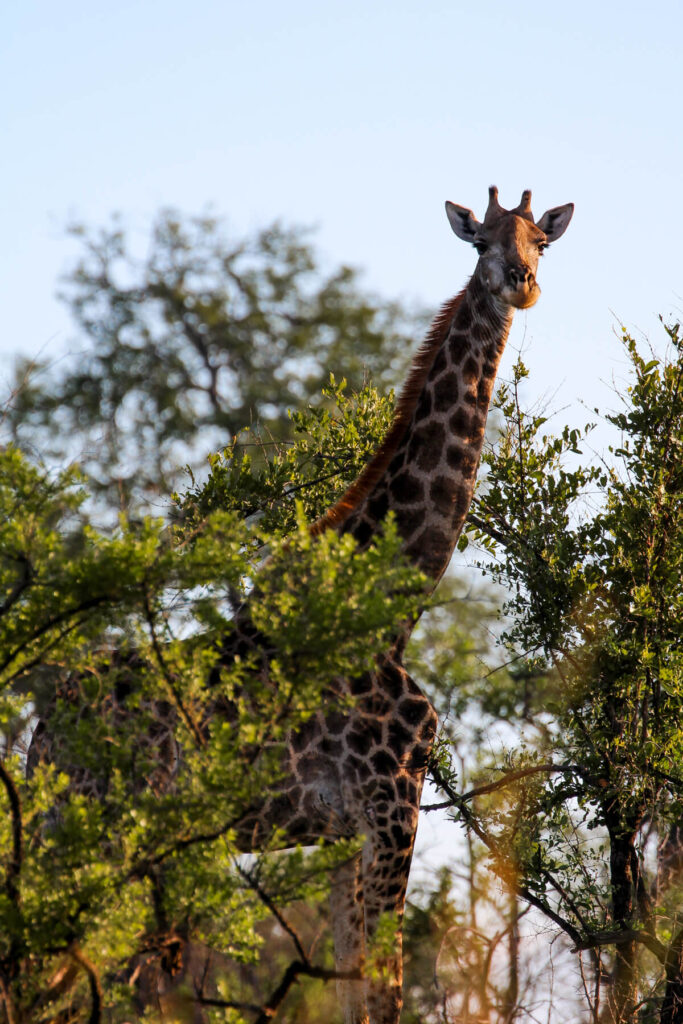
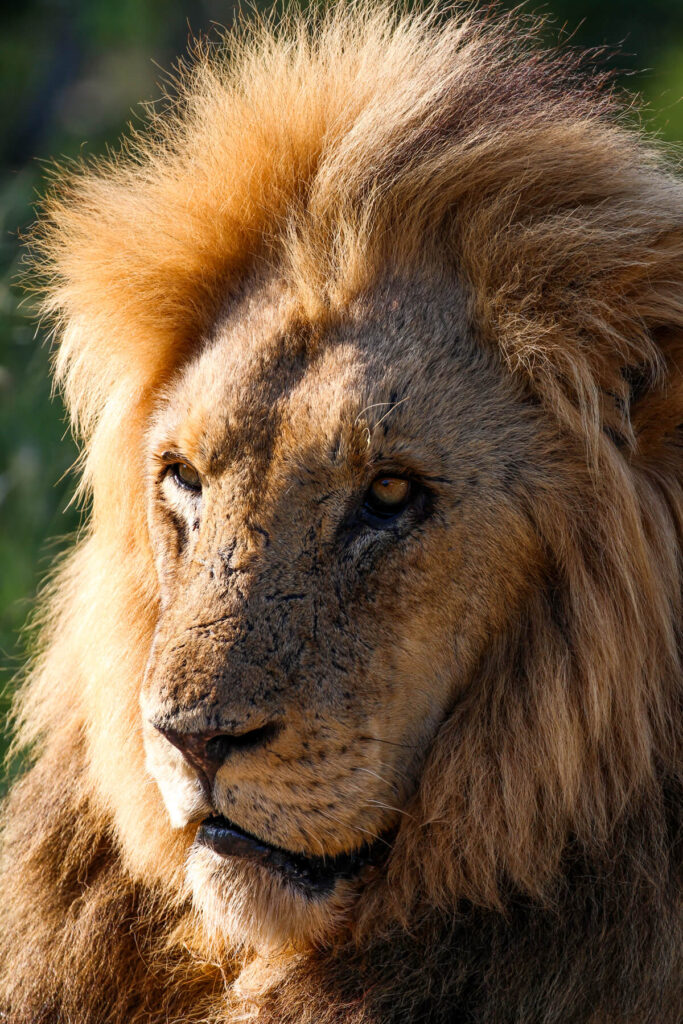
Important Traffic Rules and Behavior
In the park, you are only allowed to drive 40 km/h on sandy roads and a maximum of 50 km/h on paved roads. Animals always have the right of way. ALWAYS! If animals block the roads, you must wait. Be patient; you are here to enjoy yourself, not to rack up the miles.
Outside the camps, leaving your car is not permitted at any time. Save the breakdown team’s number in your cell phone, as getting out is prohibited even in the event of a breakdown. The main connecting roads from south to north and to the main camps are paved. Most of the side roads are sandy tracks, but they are easily passable. The animals are not allowed to be fed.
Do not throw any food scraps out of the car. And of course, don’t forget trash. Close the doors and windows when you park your vehicle. The monkeys are particularly curious and inventive in the camps. You shouldn’t even bring citrus fruits into the park. Elephants love them and could mistake your car for a can of fruit.
Our Safari Conclusion
We thought both options were great. The guided tours were more relaxed – without a passenger in the jeep, we had plenty of space and were able to talk in detail with the ranger about the park, poaching, and species conservation. It would certainly have been less pleasant in a crowded jeep.
During the tour, we were free to take photos and ask any questions that came to mind. We also experienced many animals and special moments while driving ourselves. Both options are recommended; each has its advantages and disadvantages, but a guided safari should definitely be on your list.
Although we saw almost all the animals we had imagined while driving ourselves, there were fewer sightings on a guided tour in the afternoon. This generally depends on many factors (time of day, location, weather, etc.) and makes each tour unique. No one can guarantee that you’ll see animals.
Duration of Tours
The tours all vary in length. You can book tours for 2 hours or for the whole day. They usually start early in the morning between 5 and 6 a.m., and you’ll be out for up to 4, 6, or 8 hours. There are also bush walks lasting several hours, night drives, sunset drives, and other types of excursions.
We went on half-day and full-day tours. The full-day tours start early in the morning with a stop for lunch at one of the larger camps (e.g., Skukuza). After lunch, you usually head back home. You’ll be back at your accommodation around 3 or 4 p.m. If you drive yourself, you decide the length of your safari.
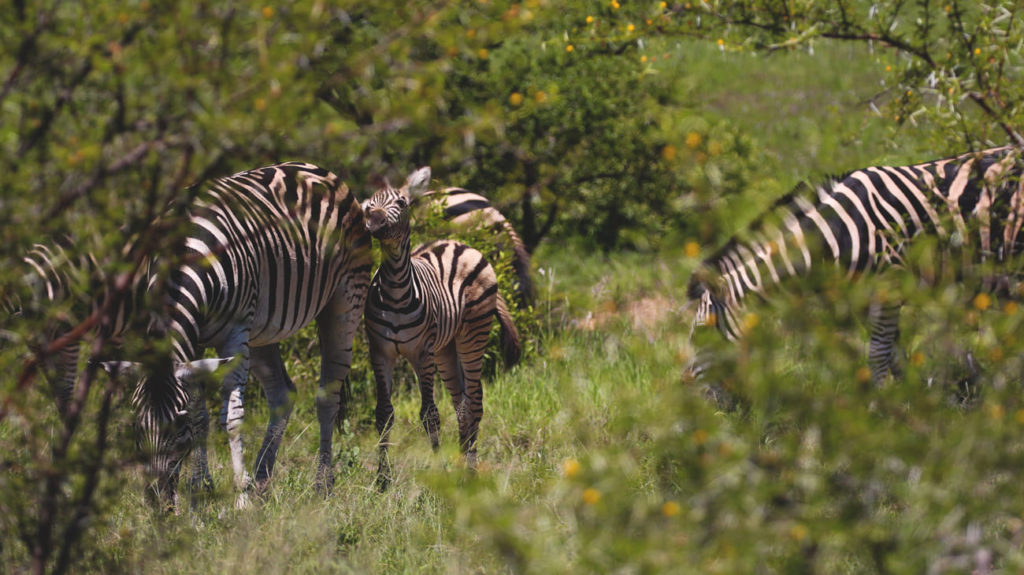
Safari Packing List and Tips
For a successful safari in Kruger National Park, good preparation is essential. It’s best to start right when the park opens to experience the wildlife in the cooler morning hours. Be sure to buy a park map, pack binoculars* and a telephoto zoom lens (rent them at www.mietdeinobjektiv.de*), and bring enough food and drink – after all, you want to be able to enjoy your time undisturbed.
Stay in your car and avoid the main roads to get to the best waterholes and observation points in peace. Breaks at the camps offer a pleasant rest and an opportunity for a quick snack. There are usually observation boards where you can see the most recent animals.
For the safari, comfortable, light clothing such as light, long pants and T-shirts is sufficient. It can get chilly in the evenings, so always bring a sweater. Sunscreen is essential, especially in open-sided jeeps, and you should apply mosquito repellent regularly. Here’s a short packing list so you don’t forget anything:

Malaria in Kruger Park
Malaria in Kruger National Park is certainly an issue, especially between October and April. Even though the risk of infection is considered relatively low even in these summer months, it is still advisable to consult a tropical medicine specialist before your trip and take appropriate precautions.
The Anopheles mosquito, which transmits malaria, is especially active in the evenings and at night. During the day, wear light-colored, long clothing, sturdy shoes with socks, and a hat. Many accommodations have mosquito nets and air conditioning – cool rooms keep mosquitoes away. It’s also a good idea to have mosquito spray on site (we recommend Peaceful Sleep).
Malaria prophylaxis is officially recommended. Discuss taking it with your doctor, as some medications are not suitable for children and pregnant women and can have side effects. But don’t be alarmed: With preparation and the tips mentioned above, you can significantly minimize your risk. ☞ Click here for our safari packing list.
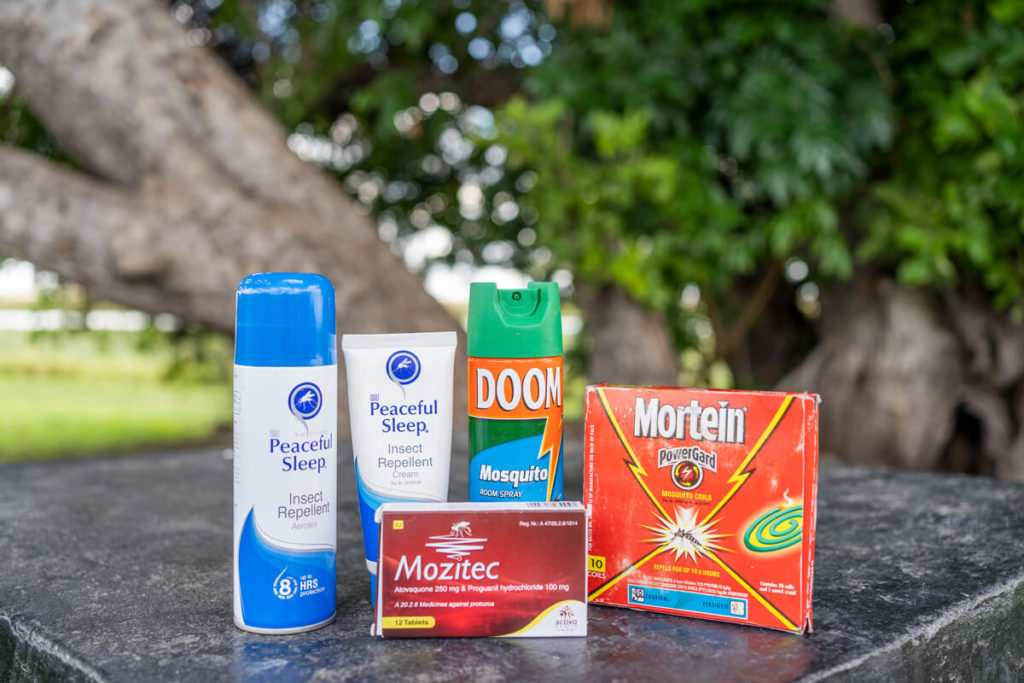
Conclusion on Kruger National Park
For us, it was one of the most beautiful trips we have ever taken. South Africa is one of our favorite countries anyway. But this time we were able to discover many new, beautiful corners of the country. We had incredibly magical and unique days in this national park. We’ve never seen so many of these animals in the wild before. It was so incredibly beautiful to observe the animals in the wild.
We highly recommend a trip to the park to everyone. The park is very well developed, there are numerous accommodations, and the prices for food, gas, accommodation, safari, etc. are still very reasonable. We definitely recommend spending at least two full days in the park. You can always be unlucky and not see as many animals in one day. The weather might also be bad.
Therefore, it’s better to have one or two days as a buffer. Tip: If you visit Kruger National Park, you should definitely explore the Panorama Route. This route in Mpumalanga is one of the most beautiful in the entire country. The Genesis Route south of Kruger National Park is also worth a detour.
Short and concise FAQ
Is a visit to Kruger National Park in South Africa worth it? When is the best time to visit Kruger National Park? How much does the entrance fee for Kruger National Park in South Africa cost?